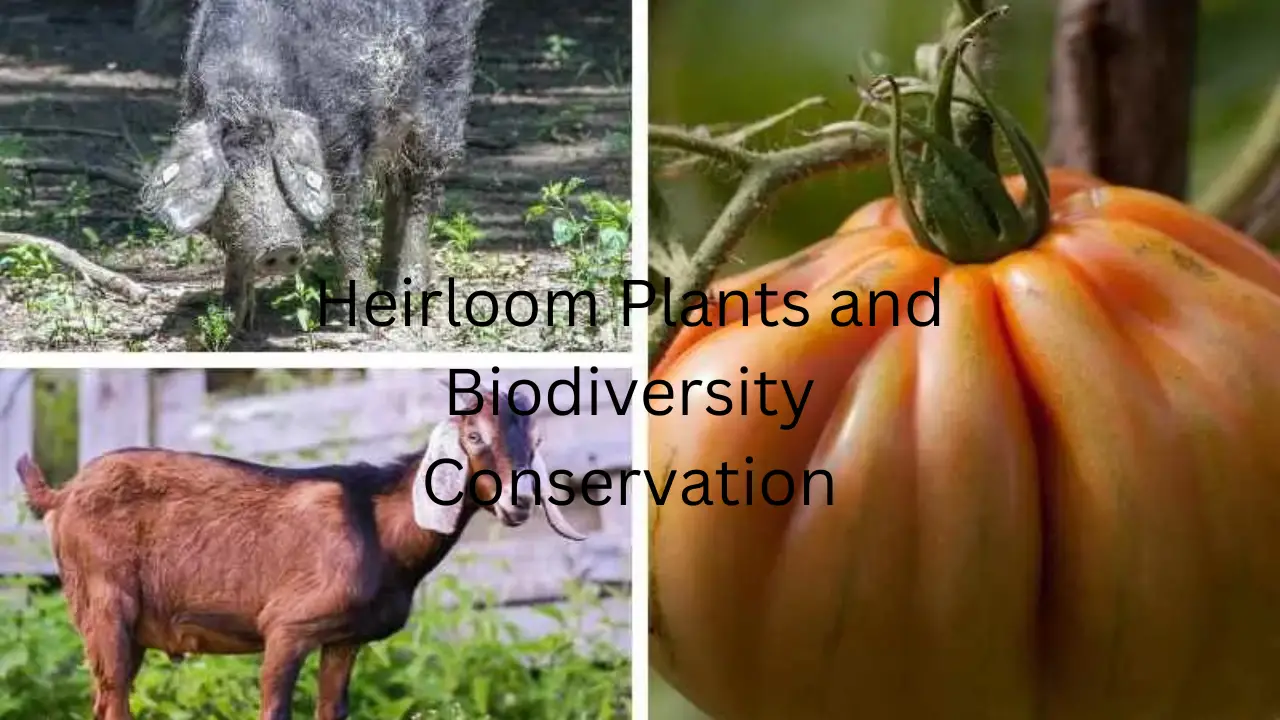
upsimples 8x10 Picture Frame, Display Pictures 5x7 with Mat or 8x10 Without Mat, Wall Hanging Photo Frame, Black, 1 Pack
62% OffHeirloom Plants and Biodiversity Conservation
In an era where monoculture and genetically modified organisms dominate our agriculture, the significance of heirloom plants in biodiversity conservation cannot be overstated. Heirloom plants are not just a piece of our agricultural heritage; they are a crucial part of our planet’s ecological balance. In this article, we will delve into the world of heirloom plants, their role in preserving biodiversity, and why they are essential for the future of our planet.
The Importance of Biodiversity
Before we dive into the realm of heirloom plants, let’s understand why biodiversity is crucial. Biodiversity refers to the variety and variability of life forms on Earth. It encompasses everything from microbes and plants to animals and ecosystems. Biodiversity is the foundation of ecosystem services, which include pollination, nutrient cycling, and pest control. It also plays a pivotal role in the development of new medicines and the adaptation of species to changing environmental conditions.
What Are Heirloom Plants?
Heirloom plants are traditional, open-pollinated cultivars that have been passed down through generations. These plants are treasured for their unique qualities, flavors, and adaptability to local growing conditions. Unlike modern hybrids, heirloom plants have not undergone extensive genetic modification. They represent a living history of agriculture, connecting us to our ancestors and their agricultural practices.
Characteristics of Heirloom Plants
Heirloom plants exhibit several key characteristics that set them apart from modern cultivars:
Genetic Diversity
One of the most significant advantages of heirloom plants is their genetic diversity. This diversity allows them to adapt to various environmental conditions and resist pests and diseases naturally.
Unique Flavors
Heirloom fruits and vegetables are renowned for their exceptional flavors. Whether it’s the sweet, juicy taste of an heirloom tomato or the rich, earthy flavor of an heirloom potato, these plants offer a sensory experience like no other.
Cultural Significance
Heirloom plants often have cultural and historical significance. They are a link to the past, representing the foods and traditions of our ancestors. Preserving these plants is a way to honor and celebrate our heritage.
The Role of Heirloom Plants in Biodiversity Conservation
Now that we understand the essence of heirloom plants, let’s explore their vital role in biodiversity conservation.
1. Maintaining Genetic Diversity
Heirloom plants serve as genetic reservoirs, preserving valuable traits that may be lost in modern monocultures. This genetic diversity is essential for breeding programs, as it provides a source of resilience in the face of changing environmental conditions.
2. Supporting Pollinators
Many heirloom plants rely on pollinators such as bees and butterflies for reproduction. By cultivating heirloom varieties, we provide essential forage for these pollinators, which, in turn, helps maintain healthy pollinator populations.
3. Reducing Chemical Dependency
Heirloom plants are often more resilient to pests and diseases, reducing the need for chemical pesticides and herbicides. This benefits not only the environment but also human health.
4. Cultural Heritage Preservation
Preserving heirloom plants is a way to safeguard our cultural heritage. These plants are living artifacts, telling the story of our ancestors and their connection to the land.
Challenges in Preserving Heirloom Plants
While the conservation of heirloom plants is crucial, it is not without its challenges.
Loss of Knowledge
As generations pass, the knowledge of how to grow and care for heirloom plants can be lost. Efforts are needed to document and pass on this valuable information.
Market Pressures
Modern agriculture favors uniformity and mass production. Heirloom plants may not meet these criteria, making it challenging for farmers to grow and sell them profitably.
Conclusion
In a world facing environmental challenges and a loss of biodiversity, heirloom plants offer a ray of hope. They are a living link to our past and a vital resource for our future. By preserving and promoting the cultivation of heirloom plants, we can contribute to biodiversity conservation and ensure a more resilient and sustainable agricultural system.
FAQs
1. Are heirloom plants the same as organic plants?
No, heirloom plants refer to traditional open-pollinated cultivars, while organic plants are grown without synthetic pesticides or fertilizers. However, heirloom plants can also be grown organically.
2. How can I start growing heirloom plants in my garden?
To start growing heirloom plants, obtain heirloom seeds from reputable sources, provide suitable growing conditions, and follow organic gardening practices.
3. Can heirloom plants adapt to different climates?
Yes, heirloom plants have a rich genetic diversity that allows them to adapt to various climates. However, it’s essential to select varieties suited to your specific region.
4. Are heirloom plants more nutritious than modern hybrids?
Heirloom plants often have unique flavors, but their nutritional content can vary. To maximize nutrition, focus on soil quality and growing practices.
5. How can I support biodiversity conservation through heirloom plants?
You can support biodiversity conservation by growing heirloom plants, promoting seed-saving initiatives, and educating others about the importance of heirloom varieties in preserving genetic diversity.











